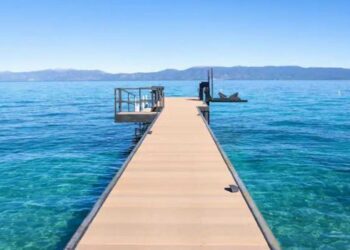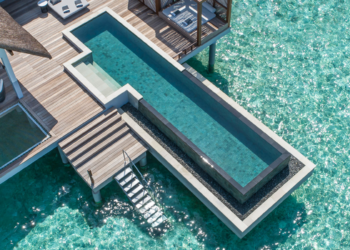At my very core, I am an adventure seeker. I’m drawn to the destinations and experiences that push me far beyond my comfort zones. My favorite travel moments are often filled with some level of discomfort that eventually turns to reflection, growth, and phenomenal stories. As I stepped through the front doors of JFK Airport a suitcase pulled behind me I felt the familiar pangs of nerves twisted with a deep level of excitement. I was beginning the journey to Antarctica. A personal accomplishment of sorts but also a destination I’m not sure I ever believed I would actually visit. In my mind, it was a place reserved for researchers, scientists, and far more seasoned adventurers. However, I was introduced to Swan Hellenic, a cruise company that is completely reimagining what an expedition cruise can be and suddenly I was at the airport going through a mental checklist hoping I’d purchased all the right gear (thankfully, Swan Hellenic provides a parka, boots, and waterproof bag). My next 11 days aboard the SH Vega, a boutique cruise ship, were some of the most memorable and surreal days of my life.
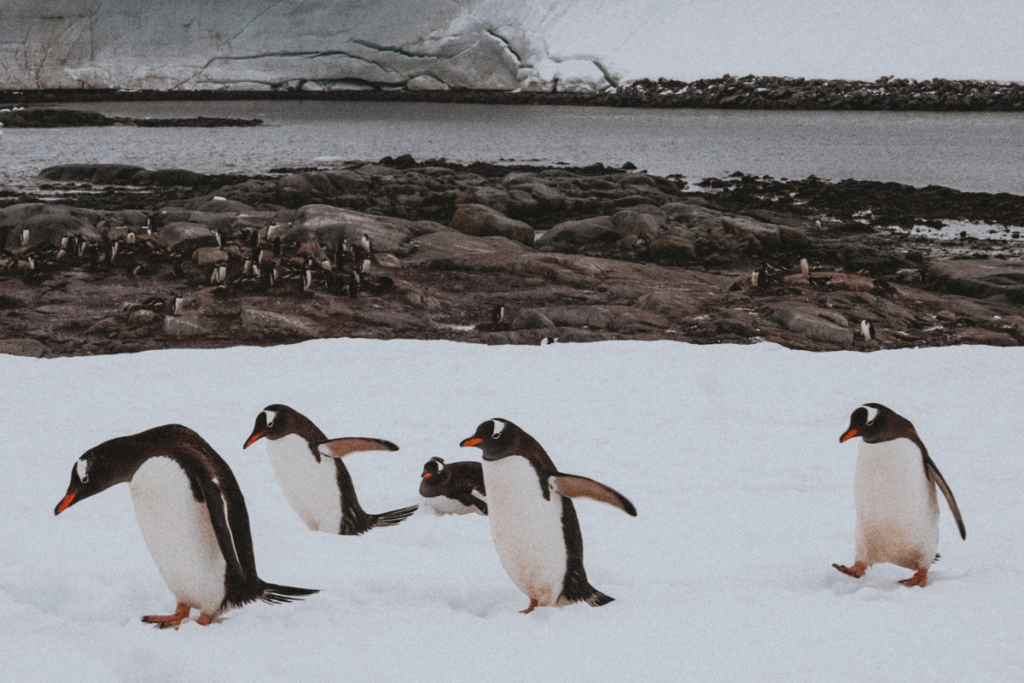
How to get to Antarctica
One of the most common questions I received from friends and family as I was getting ready for my trip was, “How do you even get to Antarctica?” Many people don’t realize visiting is possible, much less an option for luxury cruisers of various ages and fitness levels. Surprisingly, getting to one of the world’s most remote locations is less complicated than you may think. For me, it started with a flight from New York to Argentina’s capital city Buenas Aires. There I spent the night and had my first chance to connect with my fellow passengers at a welcome reception. From Buenas Aires, we boarded a short three-hour domestic charter flight to the city of Ushuaia where our ship was anchored.
From the airport, we headed to the port and where we were greeted with glasses of Champagne as we embarked on our journey to the white continent. The next and probably the most intimidating part of getting to Antarctica is the 1.5 – 2 day journey through the Drake Passage. This notoriously rough, unpredictable 600-mile body of water where the Atlantic and Pacific Oceans come together separates South America and Antarctica.
Lucky for us we had mild seas during our crossing. Many passengers took seasickness medications and spent a little extra time napping but for the most part, it was a beautiful chance to get acquainted with the ship and fellow passengers. One of the most unexpected and beautiful parts of those days was the connection between passengers. With the ship’s small size, you see the same faces often, conversations flowed over cocktails and shared experiences. We didn’t know it yet but the seeds of friendship planted in those early days would eventually lead to a mountain erupting in cheers when a gentleman celebrating his 90th birthday reached the top of a particularly challenging hike, it fueled the late-night parties with a dance floor spanning 4 generations and was the many tearful goodbyes on the final day.
The Ship
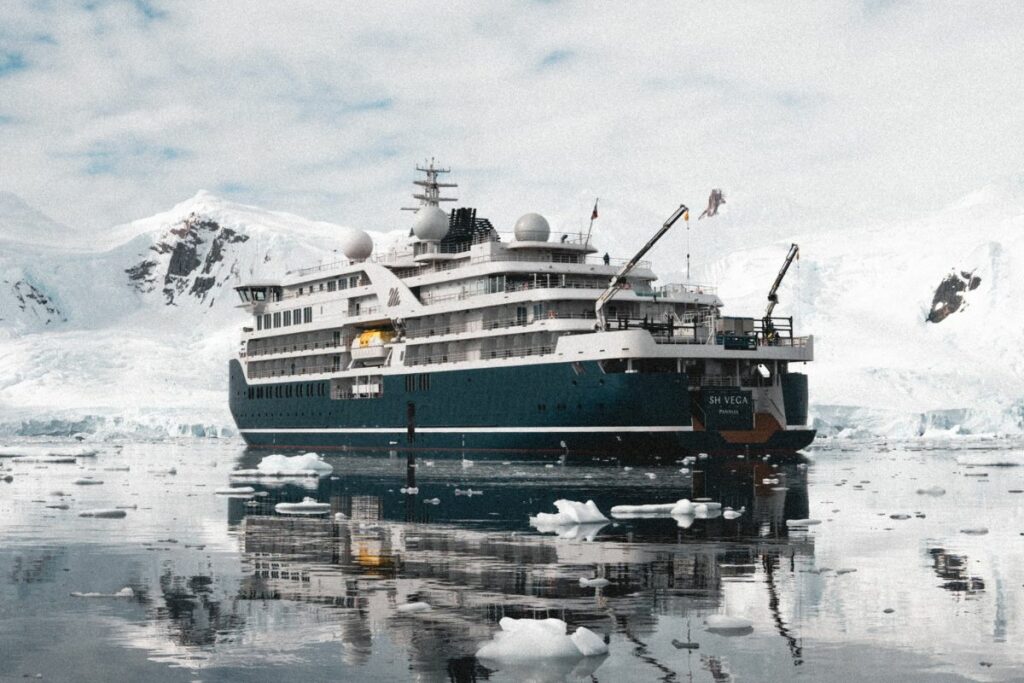
We spent 9 nights getting to know the ins and outs of SH Vega, a newly launched boutique cruise ship done in beautiful Scandinavian design. The ship has 9 decks, with all 76 guest rooms being on floors 4 – 6. It’s important to note that if seasickness is something you are concerned about, you’ll feel less movement on lower floors and in the middle of the ship. I stayed in a spacious balcony room on the 6th deck. The room felt bright and open with floor-to-ceiling glass doors occupying the entire exterior wall. The rest of the room was designed using neutral tones and warmly-hued wood. The space was filled with a comfortable double bed, couch, a rainfall shower, and my favorite parts: a holographic fireplace that played the sounds of crackling wood. The rooms also come with binoculars for watching wildlife from the balcony, espresso machines and a fully stocked minibar. However, I can attest that the bartender, Allen (a superb mixologist, too), makes an outstanding double macchiato so I always seemed to find my way to him for my daily caffeine fix.
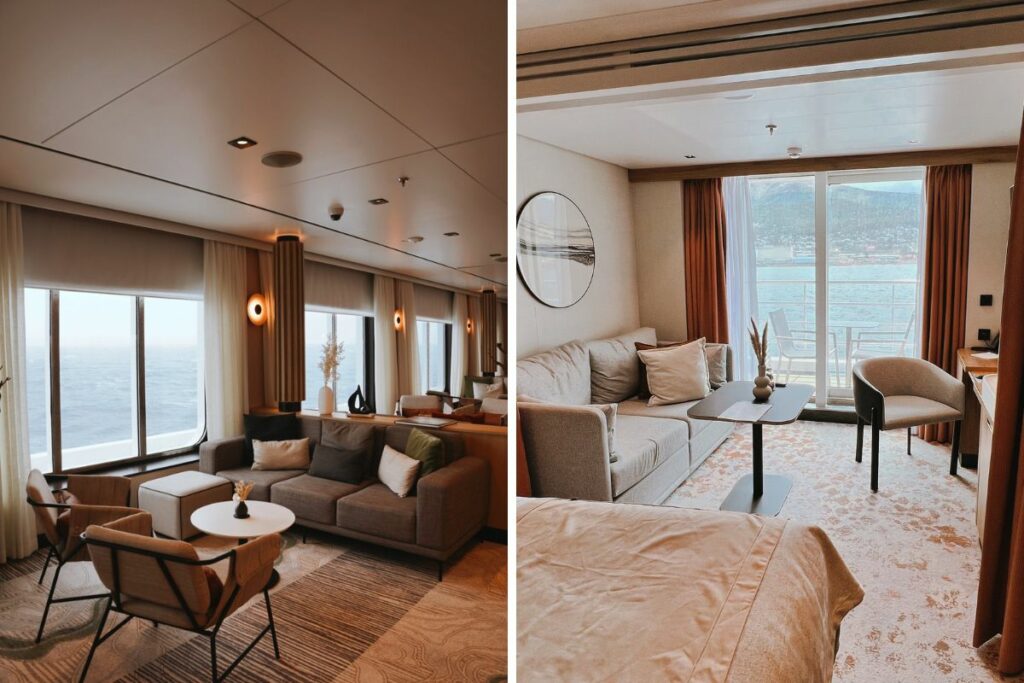
The same neutral tones and warm-wood design elements are carried throughout the rest of the ship. Including both dining rooms and the Observation Lounge which served as our meeting room, lecture hall, and evening entertainment space. One of my favorite aspects of the design was the windows. There was something really special about sinking into one of the couches with a hot drink watching the changing landscapes and keeping an eye out for whales. The ship is packed with comfort features, too, like a heated outdoor pool, hot tub, sauna, and a well-equipped gym. The design really allowed extra features and amenities that allowed for such a high-end and comfortable experience while still remaining small and maneuverable. Having a smaller, more mobile ship gave us access to places that larger ships were just unable to access. That means more options for shore landings, zodiac cruises, and just time off the boat in general. While on a zodiac cruise, one of our drivers explained to us that typically on larger Antarctic cruise ships the goal is to get passengers off the ship once per day and twice if all other factors are in their favor. Because the SH Vega is smaller and carries fewer passengers we were able to get off the ship twice every day and sometimes even three times! Talk about an incredible advantage to being on a smaller ship. There were times when the captain would excitedly tell us to go ashore to look at wildlife or watch a glacier. You won’t get this on a larger boat experience.
Antarctica Expeditions
Time off the boat better known as “missions” were the reason we were all there. Luckily, our trip was spearheaded by expedition leader, naturalist, and an absolute badass of a human (seriously, you should Google him) Antony Jinman. He, along with his onboard team of naturalists, marine biologists, polar experts, ornithologists, and oceanographers not only executed planning when, where, and how we would get off the ship they also gave in-depth lectures on topics that would be relevant to the landscape or wildlife we were expecting to see. My favorite lecture was about the citizen science projects Swan Hellenic encourages their guests to participate in. Specifically, NASA’s Citizen Science where volunteers, or citizen scientists assist in data collection to assist in scientific discoveries. Something that I really enjoyed was the access we had to the guides, both on and off the ship for asking questions.
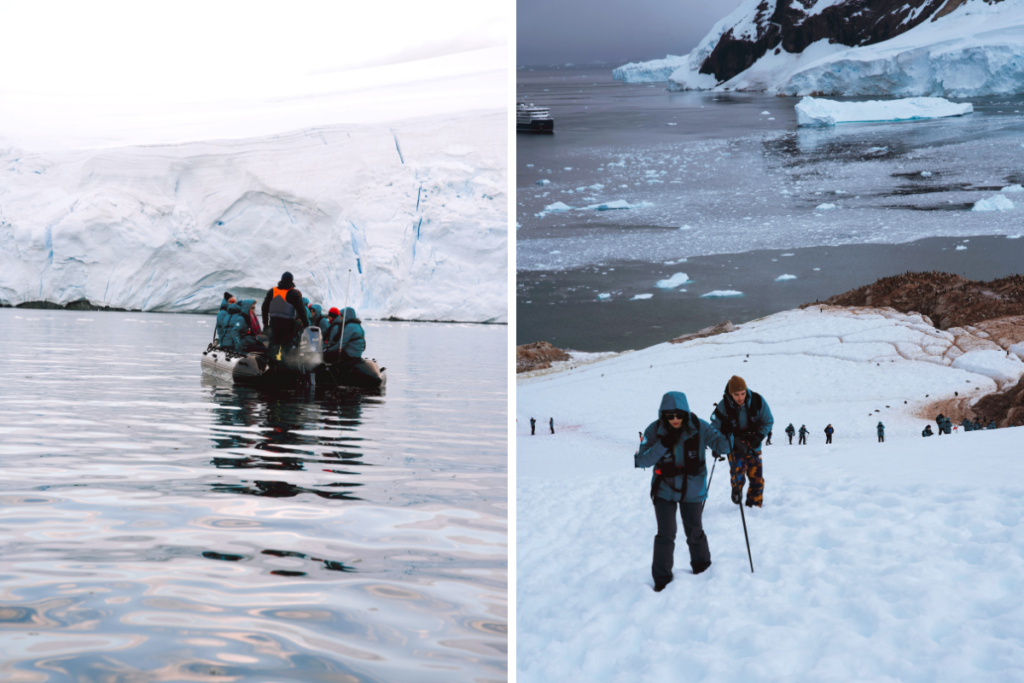
There were two main types of missions: zodiac cruises and shore landings. Zodiac cruises entailed staying in small 11-person zodiac boats for around 1 – 2 hours looking for whales and seals. On shore landings, we would often go for hikes with small red flags, positioned by guides showing us where to go. Some of the hikes were more strenuous, going uphill in soft snow with heavy boots, but everything is laid out for people to go at their own pace. I’ve outlined some of the stand-out missions for me, but keep in mind that the nature of cruising in Antarctica is flexibility: no two cruises will include the same stops.
Girlash Straight
All thanks to mostly smooth seas we exited the Drake Passage a few hours ahead of schedule. The expedition team jumped at the opportunity to take advantage of the last couple hours of daylight and get us in the zodiacs. I got on all of my gear and climbed into the boat for about an hour-long sunset cruise. We stretched our arms over the side of the small rubber boats dipping our fingertips into the cold water, we picked up a small chunk of floating ice, and let the cold wind sting our cheeks. We had officially made it to the Antarctic Peninsula.
Looking back one of the funniest moments of that first cruise was spotting a single penguin perched on a rock. Practically our entire boat squealed with excitement and all you could hear were the clicks of camera shutters. The excitement was so high, we had no idea we’d see thousands (literally) of penguins over the next six days.
Port Lockroy
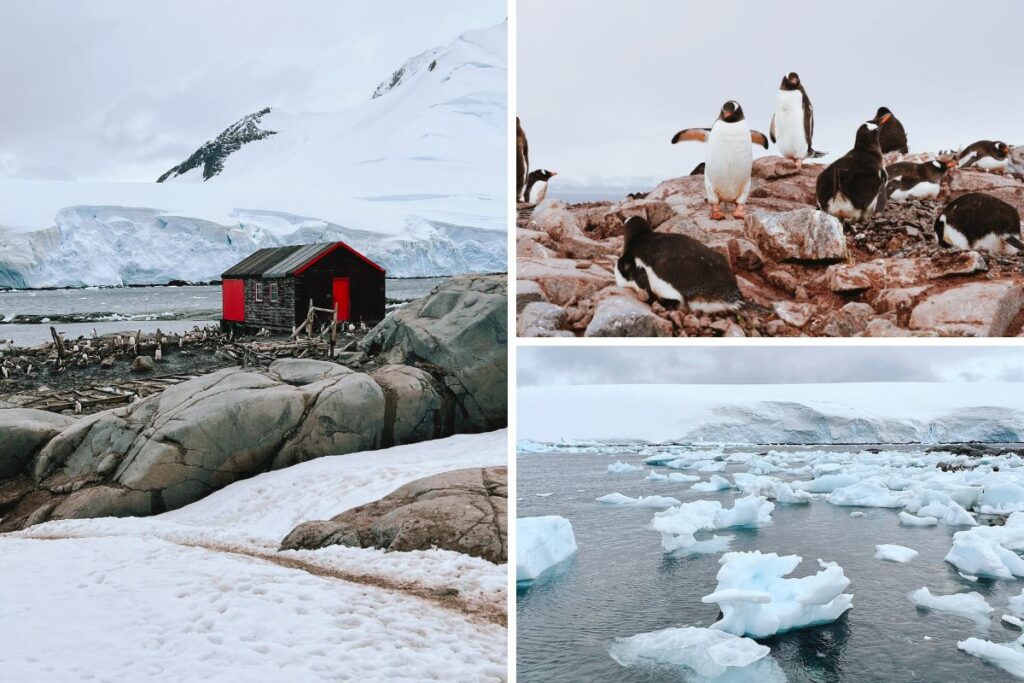
Port Lockroy was a unique stop because it was the only one that had people there waiting for us. What was once an anchorage used by whaling fleets is now a historical site managed by the UK Antarctic Heritage Trust. Each year thousands of applicants apply for four positions to work managing the museum and gift shop. Port Lockroy is also the most southerly operation in the world. Amongst other things sold in the gift shop, you can buy postcards and stamps to send to loved ones back home.
Neko Harbor
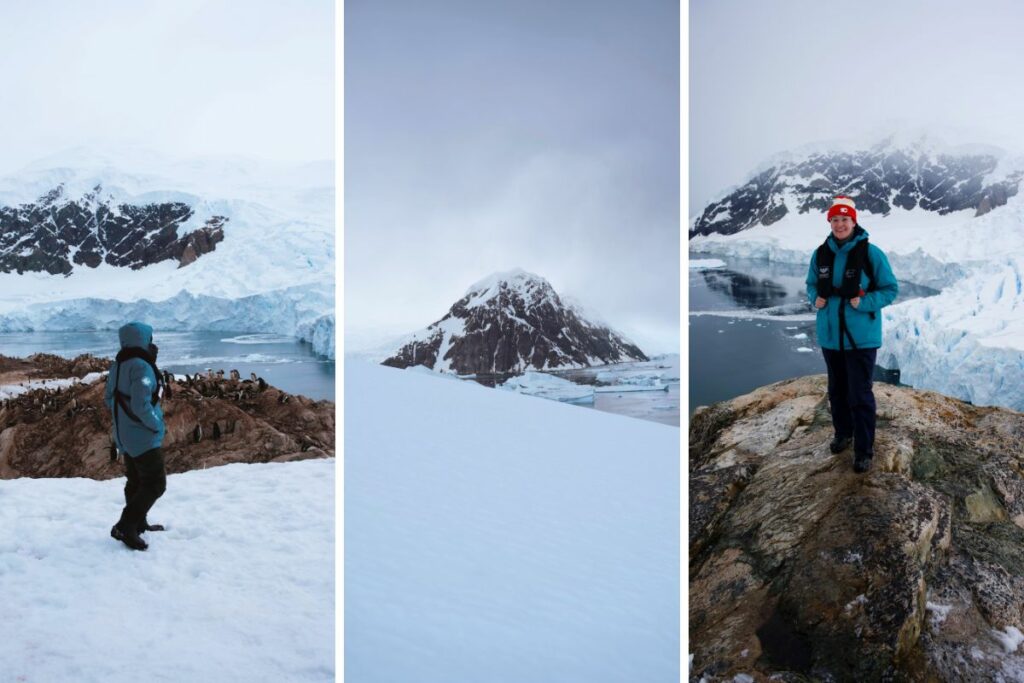
I’ll be honest, we had done two hikes earlier in the day and when the expedition lead came over the intercom telling us we’d be going on a third mission of the day I turned to a friend and said “I hope it’s anything but a hike.” Sure enough, it was a hike but when I saw that we were walking around the side of a glacier all of my complaints faded away. The trail was dotted with penguins and if I listened closely I could hear the distinct sounds of ice calving in the distance. I made it to a rock outcropping at the top and took some of my favorite pictures of the trip. Does anything scream Antarctica more than a group of penguins with a glacier in the background? Of all the hikes I guess now I can say “I’m glad it was a hike.”
Charlotte Bay
If I was only allowed to relive one moment from the trip the zodiac cruise through Charlotte Bay would be it. There was so much wildlife in the bay we almost didn’t know where to look. As soon as we pulled away from the ship our guide Mike spotted a humpback whale. Shortly after, a minke whale joined the party and swam close enough for us to hear its blowhole for most of the time on the water. We also spotted a couple of napping Weddle seals and of course, more penguins than I could count. The entire bay is surrounded by snow-covered mountains and the way the sun was shining overhead created a beautiful mirrored effect on the iceberg-filled water.
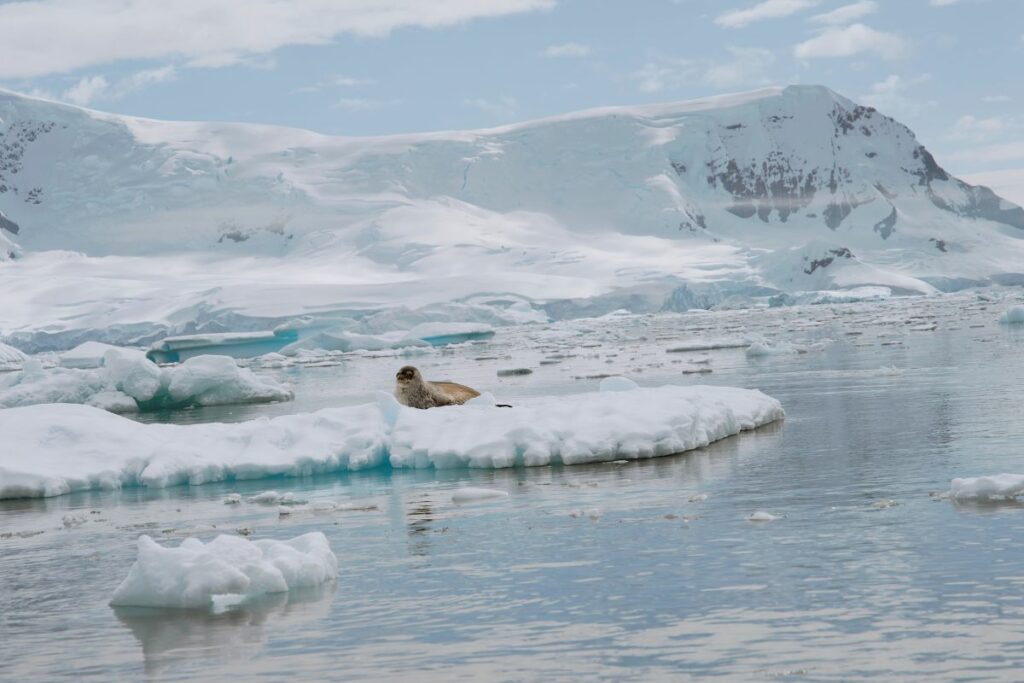
Little did I know that minutes after getting back on the ship from that peaceful zodiac cruise I would be changing into a swimsuit to plunge into the icy waters with 45 of my fellow guests.
Deception Island
One of the neatest parts about being on a small ship cruise like this one was that multiple times throughout the journey the captain would open the bridge. Passengers were able to stop by and learn a little bit about the technology used and see things from his perspective.
On a tip from a crew member, I learned that Deception Point was located in the caldera of an active volcano. In order to access the bay inside we had to sail through a narrow entranceway called Neptune’s Bellows. It was really cool to listen to the methodical conversation between the captain and helmsman as we navigated into the caldera.
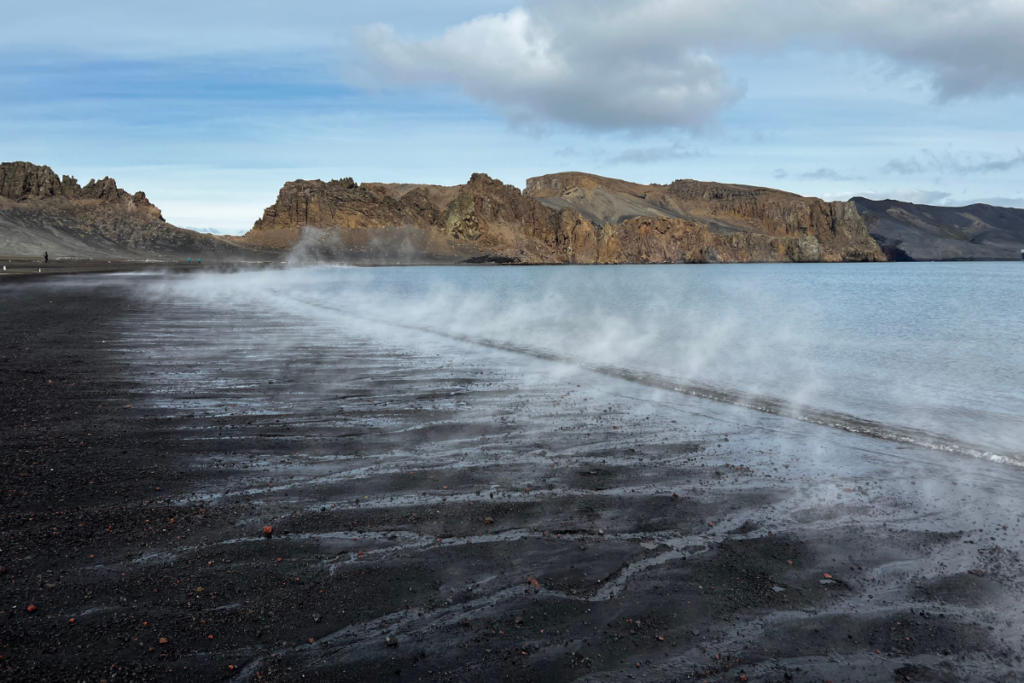
When we got off the boat in Deception Point, the first thing we noticed was the steam rising from the black sand beaches. Quickly I learned that the heat from the volcano hitting the cold Antarctic air caused the phenomenon. If we dug our boots deeper into the sand we could feel the earth getting warmer. We had a couple of hours to explore what was once home to the only airport hangar on the Antarctic Peninsula as well as look through what was left of a research station that was abandoned after the volcano erupted in 1969. I walked a little slower and watched the swimming seals a little longer than a couple of days before because this was our last stop before heading back to Argentina.
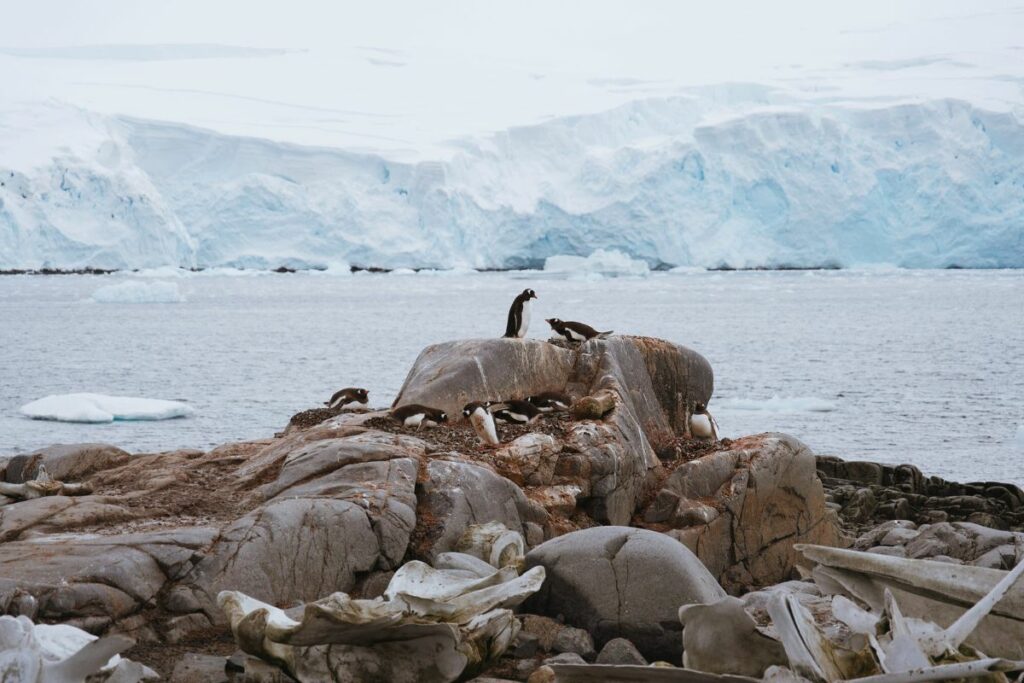
When I say this trip was life-changing I don’t mean that in a casual way, I truly mean it. Taking an Antarctic cruise was amazing, the remoteness, the wildlife, the landscapes, every part of it was breathtaking. However, the part that was most impactful for me was the people. I strive to be the person who books a solo adventure to a new continent at 70, or the parents making lifelong memories with their adult children. My type of people are the ones hiking snow-covered mountains by day and sipping cocktails around a pianist by night, and that is exactly the audience Swan Hellenic and their small luxury expedition ships attract.


